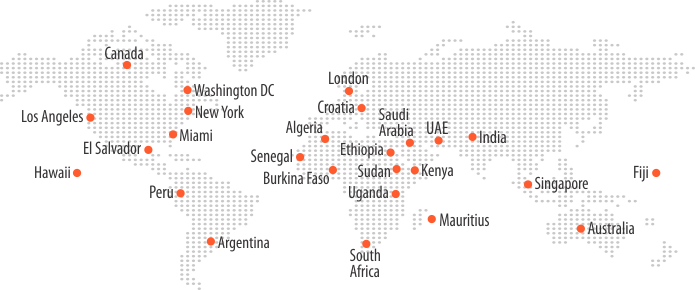What Does the Year 2022 Look Like for Telecom Industry?

While navigating ways through the twists and turns caused by the COVID-19 pandemic, most industries have gracefully surrendered to the dominance of digital technology and connectivity. Telecommunications is one such industry. As 2022 is here, and we continue to face the wraths and unpredictability of the pandemic impact, telecom operators will need to embrace a digital-first attitude to stay relevant in the industry. To match the demands of the modern customer, telecom companies must provide digital, personalized, and instantaneous services.
The industry is witnessing a cultural shift that has boosted the demand for data services and digital journeys. In an environment where users are continually demanding digital services and digital engagement, let’s look at the trends that telecom service providers can expect in the year 2022.
Business Models that are 100% Digitized
User interactions with service providers have altered dramatically due to the pandemic, as well as the way businesses are conducted now. Subscribers are more likely to choose a telecom service provider that offers digital onboarding and self-care services as more interactions are taking place online. While many operators have already updated their networks, the digitization of infrastructure and services will continue to dominate operations in 2022.
In addition, more telecom operators will choose to roll out the zero-touch network, which enables absolute digital customer experiences. This would include digitizing and automating all physical touchpoints, including storefronts and support agents. With totally digital sales and support, telecom operators will be able to digitize user experience while keeping their initial investment and overheads low.
Prioritization of Cloud Deployments
Cloud has numerous benefits for telecom service providers including the reduction of implementation and operational costs. Telecoms companies can scale up and down in response to traffic demands, allowing them to better manage their network resources. Cloud deployment has successfully enabled telecom businesses to adopt the ‘pay as you grow’ strategy which is expected to gain higher traction in the year 2022.
As telecom operators only pay for the services they use, this strategy allows them to achieve a faster time to market and lower costs – two benefits that will help them stay relevant in the increasingly competitive market dynamics we’re going to see in the coming years. A Gartner’s report for 2022 predicts that by 2025, over 95 percent of new digital projects will be built on cloud-native platforms which when compared to 2021 was less than 40 percent.
Penetration of Artificial Intelligence & Machine Learning with 5G
With increasing 5G penetration across the world which is led by China, USA and South Korea, AI and ML technologies will be used extensively by telecom businesses to automate their efforts. These technologies offer significant advantages in areas such as predictive maintenance, automated customer care, and cyber fraud prevention. The telecom domain will be seen harnessing these technologies to speed up the deployment of 5G networks, such as the ability to more quickly identify where and how to put network assets like cell towers.
High Investment in Cybersecurity by Telecom Companies
With assets and users becoming increasingly mobile in 2022, security will go beyond standard measures. All telecom businesses will be required to make significant investments in cybersecurity. Operators will have access to more customer data than ever before as advanced services such as IoT become more common, and they will be expected to use this data to create more tailored experiences. To maintain client trust, telecom service providers must protect this information. From a regulatory aspect, there will be more region-specific norms and compliances due to the massive surge in cyber-crime.
Introduction to Wi-Fi 6
The WiFi organization (Wireless Fidelity) has already released the 802.11 axe standard, which is also known as WiFi 6. One of its key advantages is the increased capacity to serve devices, reduced energy consumption, and faster information retrieval speed, which implies that a single access point may serve up to 500 devices at once. WiFi 6 technology, like 5G, has uses in the entertainment industry, which include augmented reality and virtual reality. However, it has various applications in industries and areas such as medicine, teleworking, IoT and Smart City.
2022 – The Year of Digitization & Connectivity
Revenue and subscriber growth will continue to be driven by 5G and the digitization of networks and service offerings in 2022. 5G and the promise of expanded use cases are becoming a reality thanks to a slew of new gadgets and technology. Choosing futuristic solutions for telecoms operators will allow their businesses to enable this expansion by deploying new next-generation apps and infrastructure, such as using the public cloud, while also maintaining security.
Related Posts
Forecast 2021: What’s Trending In The Telecom Industry
The Digital Shift In The Telecom Industry: Challenges And Trends






